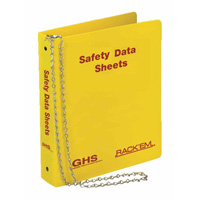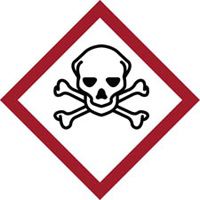| The Home page of ILPI's Safety Data Sheet (SDS) Resource, the leader in SDS information since 1995! | |
| The history and philosophy behind this resource. | |
| A curated collection of books and reference materials concerning Safety Data Sheets and closely related topics. | |
| Paste your plain text SDS into the SDS-Demystifier, and it will be converted into a hypertext-enriched document with links to detailed explanations of each key term. | |
| An extensive list of frequently asked questions about Safety Data Sheets including regulations, content, compliance, and more. | |
| A humorous take on Safety Data Sheet jargon. Fill in the blanks on our entry form to generate a personalized Unsafety Data Sheet to share with your coworkers. | |
| Since 1995, we've maintained this massive curated list of the best places to find Safety Data Sheets on the Internet. | |
| Way more than a glossary, this hypertext-enhanced resource covers hundreds of SDS-related terms and expert knowledge. Each entry includes both the SDS relevance and links to additional authoritative resources. | |
| Archived results of Safety Data Sheet related polls taken by some of our millions of site visitors | |
| You are here! The OSHA regulations behind SDS regulations, including the inspection guidelines and over 400 official interpretations letters under the Hazard Communication Standard | |
| Commercial suppliers of SDS authoring and management software as well as cloud compliance services. | |
| Commercial companies that will create SDS's for your specific needs as well as SDS translation companies. |

Safety signs, banners, and scoreboards? Get yours at Safety Emporium!
CPL 02-02-079, Appendix H
Guide for Reviewing Safety Data Sheet (SDS) Compliance
NOTE: This guide has been developed for use as an optional aid during inspections. The information contained in this Appendix mirrors the information required in Appendix D of the standard, a mandatory appendix.
If a CSHO [Compliance Safety and Health Officers] is reviewing an SDS for compliance, the following list of required elements may be helpful:
- Section 1, Identification
- Product identifier that is on the label.
- Other means of identification.
- Recommended use and restrictions of use.
- Contact information for the responsible party (name, address, phone number).
- Emergency number - A number that reaches a knowledgeable person on the other end.
There is no requirement for the emergency number to be staffed 24 hours per day if the SDS specifies the restrictions on the contact hours. The emergency contact number can be for a company contracted to provide information in the case of an emergency. The knowledgeable person must be able to answer questions and be understandable (e.g., speak English).
Note: If the company name, address and phone number are located at the top of the page instead of in Section 1, this is a de minimis violation and a citation shall not be issued.
- Product identifier that is on the label.
- Hazard Classification(s) - including hazards not otherwise classified. The Hazard Classification includes the Class and the Category, e.g., Flammable Liquid, Category 1.
- Signal word(s), hazard statement(s), symbols (pictograms without the border) or a description of the symbol, precautionary statement(s).
- Unknown acute toxicity percentage if the ingredient with unknown acute toxicity is present at a concentration ≥ 1% and the mixture is not classified based on testing of the mixture as a whole.
- Chemical name, common name and synonyms.
- Chemical Abstract Service (CAS) Registry number and other unique identifiers.
- If the chemical is a substance, impurities, and stabilizing additives which are themselves classified and which contribute to the classification of the substance.
- If the chemical is a mixture the SDS must include the above information and:
- The exact percentage or concentration ranges of all ingredients classified as health hazards that are:
- present above their cut-off limits; or
- present a health risk below the cut-off limits.
- present above their cut-off limits; or
- The exact percentage or concentration ranges of all ingredients classified as health hazards that are:
- Concentration ranges may only be used where a trade secret is claimed in accordance with paragraph (i), for batch to batch variability, and for a group of substantially similar mixtures.
- If a trade secret is being claimed, a statement that that the exact concentration or ingredient identity is being withheld for that reason.
- Necessary first aid measures by route of exposure.
- The most important symptoms and when they occur (acute/delayed).
- Whether medical attention is needed immediately and any special treatment, if necessary.

Protect sensitive electronic and laboratory equipment with Ansul CleanGuard+ extinguishers from Safety Emporium.
- Extinguishing media to use.
- Any specific hazards caused by combustion of the material.
- The required PPE for fire-fighting.
- Precautions, PPE, and emergency procedures required for spill cleanup.
- Methods/materials for containment and cleanup.
- Precautions for safe handling.
- Safe storage conditions, including incompatibilities.
- OSHA permissible exposure limit (PEL), American Conference of Governmental
Industrial Hygienists (ACGIH) Threshold Limit Value (TLV)®, other exposure limit(s)
recommended by the SDS preparer (including ceiling and other short-term limits).
- Appropriate engineering controls.
- Protective measures (e.g., PPE).

This guide to safer laboratories and maker spaces is just one of many lab and safety items available at Safety Emporium.
- Appearance (physical state, color, etc.).
- Odor.
- Odor threshold.
- pH.
- Melting point/freezing point.
- Initial boiling point and boiling range.
- Flash point.
- Evaporation rate.
- Flammability (solid, gas).
- Upper/lower flammability or explosive limits.
- Vapor pressure.
- Vapor density.
- Relative density.
- Solubility(ies).
- Partition coefficient: n-octanol/water.
- Auto-ignition temperature.
- Decomposition temperature.
- Viscosity.
- Reactivity.
- Chemical Stability.
- Possibility of hazardous reactions.
- Conditions to avoid (e.g., static discharge, shock, vibration).
- Incompatible materials.
- Hazardous decomposition products.
- Routes of exposure.
- Symptoms related to the physical, chemical and toxicological characteristics.
- Numerical estimates of toxicity (such as acute toxicity estimates).
- Immediate, delayed, and chronic effects from short- and long-term exposure.
- Whether a chemical is listed by NTP, IARC or OSHA as a carcinogen.
The full tittle of Section 16 is "Other information, including date of preparation or last revision." It is permissible to title Section 16 "Other information."
- Including date of preparation or last revision - This does not mean date of printing. The use of the statement "valid on the date of printing only" is inconsistent with the requirements of the HCS as the SDS is intended to be a reference document that reflects the most accurate and current information about a specific hazardous chemical that is available at the time the SDS is developed.
- If new information has become available, have the SDSs been updated within three months?
If there is no relevant information for a section or subsection (e.g., flash point), the SDS must state that no applicable information is available (NA or none).
Previous: Appendix G | Top of Page | Next: Appendix I
The official, public domain, OSHA version of this document is available at https://www.osha.gov/sites/default/files/enforcement/directives/CPL_02-02-079.pdf.


